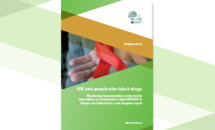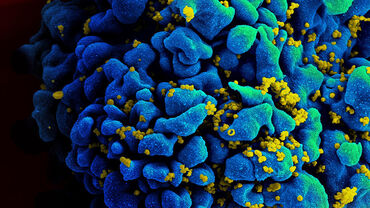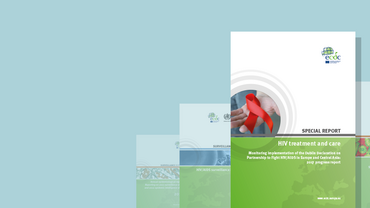The impact of the COVID-19 pandemic on the HIV response in Europe and Central Asia - Monitoring implementation of the Dublin Declaration on partnership to fight HIV/AIDS in Europe and Central Asia
This report provides a record of the impact noted by countries on HIV services and monitoring capacity which can be used retrospectively to better understand the effects of the COVID-19 pandemic on the HIV situation in the European Region.
Executive Summary
In 2021 and 2022, a survey was developed to assess the impact of COVID-19 on HIV service delivery and monitoring capacity in Europe and Central Asia. Countries were asked whether COVID-19 had an impact on several HIV-specific and non-HIV specific services compared to pre-COVID levels. Although fewer countries reported a reduction in service provision across all HIV-specific services in 2022 than in 2021, the impact is still being felt compared to pre-pandemic service levels. For HIV-specific services, in-clinic and community-based HIV testing saw the largest impact due to COVID-19. For non-HIV specific prevention services, including services related to other STIs, condom distribution, harm reduction for people who inject drugs, and general prevention outreach, most countries reported that services were severely reduced.
Although treatment services were affected, many countries applied creative means to ensure people did not experience breaks in treatment, including longer prescriptions. Many countries were unable to assess the impact of the COVID-19 pandemic on pre-exposure prophylaxis (PrEP) services. This suggests that mechanisms for reporting on PrEP uptake are not sufficiently embedded in the existing monitoring processes. In terms of the policy impact, people living with HIV were recognised as a priority for COVID-19 vaccination in the West and Central regions but not in the East region. Opioid substitution therapy did not appear to be significantly affected, with increases in provision seen in a number of countries. The key population most frequently reported to have experienced a disproportionate impact during the pandemic was sex workers. This was related to factors such as an increase in risk behaviour and reduced access to harm reduction services.
COVID-19 also had an impact in terms of staff and facility resources being diverted away from the HIV response to the COVID-19 response. When considering different types of staff and facility resources, in 2021 the largest impact was seen in clinical services for people living with HIV and human resources for monitoring and surveillance, with 27 countries reporting a diversion for both of these areas. Doctors, nurses, and other human resources were often transferred between departments to urgently address COVID-19 clinical needs. Those services least frequently reported to have been impacted by diversion of resources were prevention services, with only 15 countries reporting such diversions.
This report provides a record of the impact noted by countries on HIV services and monitoring capacity which can be used retrospectively to better understand the effects of the COVID-19 pandemic on the HIV situation in the European Region.








